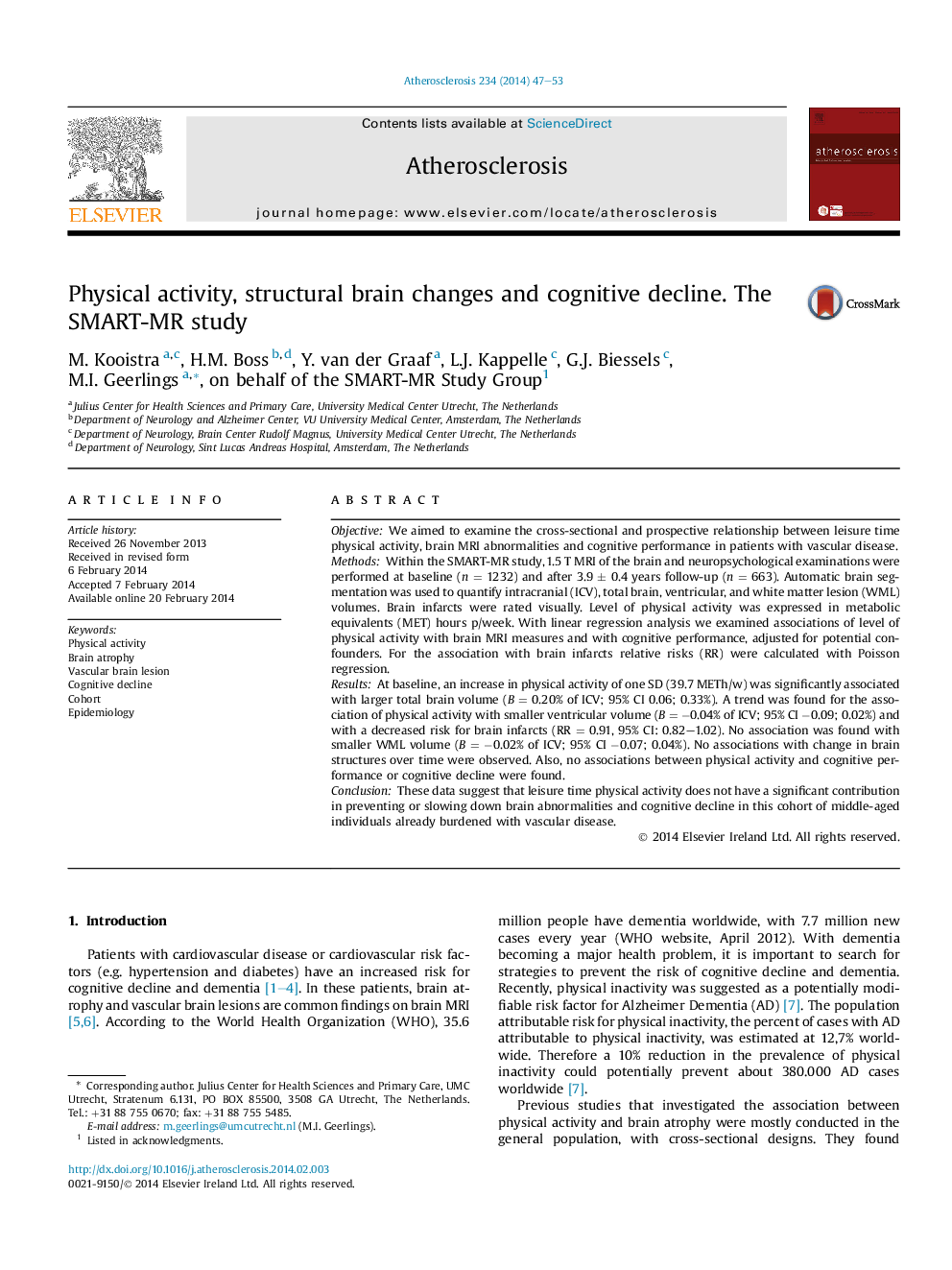| کد مقاله | کد نشریه | سال انتشار | مقاله انگلیسی | نسخه تمام متن |
|---|---|---|---|---|
| 5946513 | 1172359 | 2014 | 7 صفحه PDF | دانلود رایگان |

- Higher level of physical activity is associated with a smaller brain volume.
- Physical activity is not associated with change in brain structures over time.
- Physical activity is not associated with cognitive performance or cognitive decline.
ObjectiveWe aimed to examine the cross-sectional and prospective relationship between leisure time physical activity, brain MRI abnormalities and cognitive performance in patients with vascular disease.MethodsWithin the SMART-MR study, 1.5 T MRI of the brain and neuropsychological examinations were performed at baseline (n = 1232) and after 3.9 ± 0.4 years follow-up (n = 663). Automatic brain segmentation was used to quantify intracranial (ICV), total brain, ventricular, and white matter lesion (WML) volumes. Brain infarcts were rated visually. Level of physical activity was expressed in metabolic equivalents (MET) hours p/week. With linear regression analysis we examined associations of level of physical activity with brain MRI measures and with cognitive performance, adjusted for potential confounders. For the association with brain infarcts relative risks (RR) were calculated with Poisson regression.ResultsAt baseline, an increase in physical activity of one SD (39.7 METh/w) was significantly associated with larger total brain volume (B = 0.20% of ICV; 95% CI 0.06; 0.33%). A trend was found for the association of physical activity with smaller ventricular volume (B = â0.04% of ICV; 95% CI â0.09; 0.02%) and with a decreased risk for brain infarcts (RR = 0.91, 95% CI: 0.82-1.02). No association was found with smaller WML volume (B = â0.02% of ICV; 95% CI â0.07; 0.04%). No associations with change in brain structures over time were observed. Also, no associations between physical activity and cognitive performance or cognitive decline were found.ConclusionThese data suggest that leisure time physical activity does not have a significant contribution in preventing or slowing down brain abnormalities and cognitive decline in this cohort of middle-aged individuals already burdened with vascular disease.
Journal: Atherosclerosis - Volume 234, Issue 1, May 2014, Pages 47-53